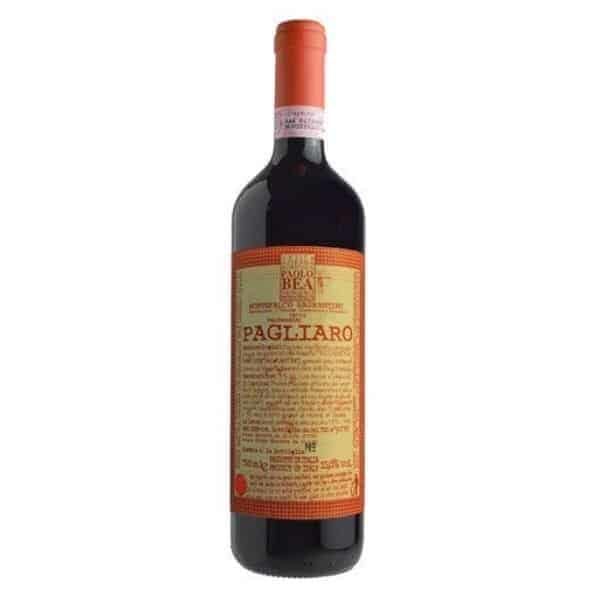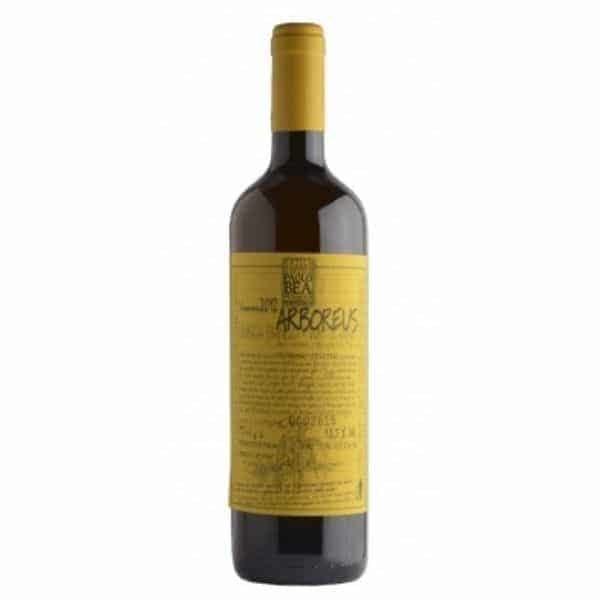Curiosity
The Trebbiano Spoletino grapes used for the production of Arboreus are harvested from old vines located in the low hills between Trevi and Montefalco at about 200 meters above sea level. The wine is generated by assisting natural processes without forced stabilization. Fermentation took place with its own indigenous yeasts without temperature controls and without the addition of other substances, with the exception of modest doses of sulphites added only in decanting and bottling performed without sterile filtration.
Author Suggestion
“The maceration of Trebbiano evokes hints of very ripe fruit, dried flowers and honey on the nose. But leave it in the glass for a while and you will discover how it will gradually allow itself to further perfumes and fragrances in harmony with each other. The olfactory game finds further vigor in combination with its full-bodied, intense and lively taste, where we recommend pairing it with medium-structured dishes: first courses without excessive seasonings, cheeses, cold cuts and white meats. Try it also with a not too elaborate fish. Share it with altruism on occasions where you want to amaze your guests with the simplicity of a complex wine. ” Gus’s team
Wine Tips
Trebbiano Spoletino is a native Umbrian grape rediscovered in recent years, it is a grape historically present in the area of Spoleto, Trevi and Montefalco, which vines were trained in trees, married to elm or maple trees. The so-called “married vine” or “married” is an ancient cultivation method dating back to the Etruscans, which uses plants as guides, leaving the vine free expression of vigor. This type of cultivation is the daughter of an agriculture in which multiple crops coexisted, defining a rural landscape that represented the face of the territory for centuries, until the second post-war period. Since the sixties, the progressive agricultural mechanization has radically changed the face of the countryside, the “married vines” have been replaced by extensive cultivations. Today the few plants of married vine represent the real testimony of the archeology of the vine. Until a few years ago there were very few producers of Trebbiano Spoletino, today almost all producers in the area have invested in this vine, producing at least one label. The hectares of vines therefore, although still few, are constantly growing.
The name Trebbiano can be confusing, the Trebbiano Spoletino, in fact, differs from the Tuscan Trebbiano, the Trebbiano di Soave or the Abruzzese Trebbiano, being a grape that produces fresh and elegant wines, with fruity notes, tropical hints and a good expressive complexity. It is a late vine, which even at full phenolic maturity retains a high acidity and it is thanks to this characteristic that it is considered a very ductile vine, suitable for producing sparkling wines, still, macerated and passito wines. Its extraordinary versatility leaves room for multiple stylistic interpretations that make it extremely fascinating. It is a wine that shuns standardization, revealing a surprising new facet each time. It also has an excellent aging capacity, with interesting olfactory evolutions that can also lead to notes of hydrocarbon. In addition to the natural flexibility of the grape, it is necessary to consider the fact that many wineries are in an experimentation phase, struggling with the first vinification. This multiplicity is a source of expressive richness, on which to build the future of this wine with a way to go that is anything but unique and standardizing














Reviews
There are no reviews yet.